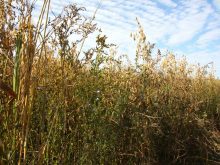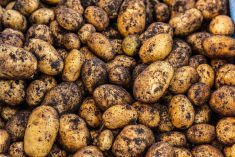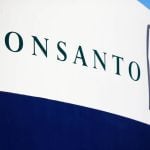A research project by Agriculture and Agri-Food scientists hopes to develop genetic resistance to a chronic disease in Canada’s potato crops.
The project by AAFC researchers in Prince Edward Island aims at identifying precise genes responsible for resistance to common scab disease in some potato varieties so breeders can use them in developing new resistant varieties.
A truly scab-resistant variety is still three to four years away but the team is making progress, said lead researcher Bourlaye Fofana.
Read Also

Boosting productivity could mean historic farm revenues
FCC report finds increasing productivity in the Canadian agriculture sector could mean $30 billion in farm revenue in the next decade
“Right now we are not there yet,” Fofana said in a telephone interview. “(But) we are on a very good track.”
Common scab disease is a soil-borne disease caused by bacteria-like organisms. Fofana said a mail-out survey of Canadian potato growers in 2003 found that 82 per cent of farms reported a scab problem. Scab was most prevalent in Eastern Canada, especially Quebec, but less so in Western Canada. No systematic survey has been conducted since.
Although safe to eat, scab-affected potatoes carry unsightly scabby lesions making them impossible to sell to the fresh vegetable market.
“No one wants a potato in a grocery bag that looks like a rock,” said Fofana.
The lesions also make potatoes hard to peel, resulting in a lot of food waste. Fofana said a severe infection can cause a potato to lose up to 90 per cent of its flesh.
AAFC estimates the disease costs producers $17 million a year in potato food waste and lost revenue. Cultural and chemical practices provide some disease control. But the only successful control will have to be breeding resistant varieties through genetic research.
AAFC’s hunt for resistant genes involves a molecular biological procedure known as gene expression profiling. Genes can be “expressed” when an enzyme “transcribes” a potato’s DNA into a complementary RNA string of text called MessengerRNA (mRNA). Comparative gene expression profiling measures the activity (or expression) of thousands of genes at once.
A gene producing lots of mRNA is called “up-regulated” while a gene producing little or no mRNA is termed “down-regulated.”
The AAFC project centres around two potato varieties: Hindenburg, which is more resistant to scab, and Green Mountain, which is less resistant. Using comparative gene expression profiling, the research team identified 273 different genes in 34 biochemical pathways (connected biological reactions supporting one another) that differentiate Green Mountain and Hindenburg and might be responsible for scab resistance.
Fofana said researchers came away with a few genes which make Hindenburg more resistant to scab as compared to Green Mountain. The next step is to do genetic mapping to identify those genes associated with scab resistance. After that, the data will be handed off to breeders who will conduct trials in the greenhouse next winter and then later in the field to see if what works indoors also does so outside.
The end goal is to provide potato growers with scab-resistant varieties producing less waste and better financial returns, AAFC says.















